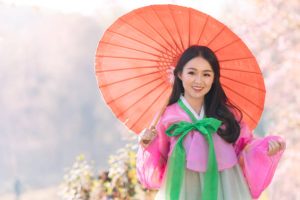Delving into the world of cosmetic transformation, one can’t help but notice the spotlight that shines on South Korea, particularly in the finer points of rhinoplasty. This exploration is an ode to the South Korean mastery in reshaping noses, providing insight into why this corner of the globe has become synonymous with surgical finesse. The forthcoming narrative doesn’t just give facts; it envelops its audience into the cultural and artistic dedication found within Korean cosmetic clinics.
To embark on a journey within South Korean rhinoplasty is to discover not just a medical procedure, but an artistic endeavour that marries surgical acumen with aesthetic imagination. Clinics here are less about the clinical and more about the passionate commitment to cosmetic artistry.
We are not merely discussing a popular cosmetic choice; we’re talking about an aspect of South Korea that reflects its rich traditions and commitment to quality deeply etched in its societal values.
Tracing Rhinoplasty’s Evolution in South Korea’s Cultural Fabric
Contents

Now, let us delve a little deeper into South Korea’s historical tapestry and trace how rhinoplasty has become part of the nation’s beauty narrative. The conflict known as the Korean War set the stage for the burgeoning field of cosmetic surgery. From those reconstructive roots, a flourishing sector has grown, propelled by surgical innovation and a national fascination with physical beauty. Rhinoplasty, once a simple reconstructive technique, has been sculpted by Korean specialists into a methodological masterpiece—capturing the essence of personalization and facial harmony.
Korean popular culture—through its melodramatic television series and pop music phenomena—acts as both mirror and beacon to aesthetic ideals that many strive to reflect. This cultural phenomenon has not just put rhinoplasty in the limelight; it has woven it into the fabric of South Korea’s identity, as intrinsic as the nation’s rich history and forward-looking ethos.
The influence radiating from K-dramas and K-pop idols casts a vivid spotlight on preferred beauty standards and sparks a vision of aesthetic excellence that many yearn to emulate. This has catapulted rhinoplasty to prominence, making it more than a procedure—it’s become a cultural signature, a statement deeply integrated with national identity.
The Craft of Rhinoplasty: Beyond Aesthetics

Embarking on a rhinoplasty journey involves more than just enhancing aesthetics—it’s about creating symphony and balance, both functionally and visually. Whether it’s a quest to refine the physical facade or address anatomical corrections, the procedure aims to mirror the individual’s aspirations and physical realities.
Every rhinoplasty in South Korea is a testament to the tailoring options available—the surgical blueprint is never one-size-fits-all. Surgical pathways might meander through the augmentation of the nasal tip, bridge straightening, or nostril reduction, all performed with a commitment to maintaining harmony with the rest of the facial features.
Pre-operative interactions between surgeon and patient are pivotal, setting forth a mutual understanding of the expected results. During this stage, healthcare providers equip patients with the knowledge to navigate the period before and after the procedure, emphasizing readiness and subsequent care for the recovery journey.
The Rhinoplasty Process: A Personalized Surgical Tapestry

Undergoing rhinoplasty in South Korea is to step into a realm of personalized surgical design. The experience is deeply personal, as professionals strategize the operation with the patient’s unique aesthetic goals dictating each move. The surgical narrative unfolds with precision as the patient rests, assured that every adjustment to their nose is a step toward the pre-envisioned outcome.
Post-operative care, a chapter often overshadowed by the procedure itself, is critical and deserves attention equal to the surgery. Follow-up appointments reassess and navigate the recovery landscape, ensuring optimal healing conditions while managing any post-surgery discomfort. Despite possible post-operative experiences of swelling, these moments are transient and fall under the capable management of the overseeing specialists.
When considering rhinoplasty, it’s crucial to remember that all surgeries introduce the possibility of risk. It’s the surgeon’s transparency and patient’s understanding of these potential scenarios that form the foundation of a trustworthy medical relationship, ensuring an informed journey from start to finish.
South Korea’s Rhinoplasty Renaissance: A Convergence of Art and Medicine

Rhinoplasty in South Korea stands as a symbol of aesthetic ideology and surgical prowess. This nation doesn’t just conduct cosmetic procedures—it nurtures a cultural environment where beauty is realized through a continuum of innovating surgical methods and a reverence for artistic integrity. South Korea caters to discerning individuals from the world over, making it a cherished destination for those in pursuit of cosmetic refinement, with rhinoplasty at the heart of this pursuit, cementing the country’s reputation as an epicenter of beauty and transformation.

